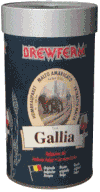| Hello, As you may know be now I'm bob an today i'm going to tell you how to make wine from scratch. Not just any wine, a good genuine grape wine. |
| First thing we have to do is find the right grapes for the wine. Most people will be limited to grapes they have been given, have growing, or have bought. You can nearly always make 'some' kind of wine from any grape, but good grapes make the best wine. If you are about to plant a vine to grow grapes then it is realy worth looking at the availble types to find the one that will suit. If you have control over when the grapes are picked aim for dry day when the grapes are ripe, never under estimate the power of a few more good days on the vine to ripen your grapes. If you want to measure the sugar content hence ripeness of the grapes you can use
|  Selection" width="145" height="478" /> Selection" width="145" height="478" /> |
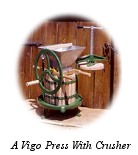 | Once you have the grapes you plan to use you will need to get the juice out of them. This is harder than it sounds. The first step in juice extration is to 'crush' the grapes or brake the skin. For small crops this can be done by hand or an electric juicer (wich also skips step two), for somewhat lager crops you can use a large bucket and 'tread' your feet or Vigo's Plupmaster, for large crops a proper grapemill becomes esentual. |
| Once the skins are broken you can 'press' the juice out of them. (If you are making a red wine you may want to ferment 'on the must' , this aids colour and tanin extraction, to do this you only press the grape pulp after 1-3days of fermentaion) Again depending on how meny grapes you have you can place the grape plup in a a nylon straining bag and wring the jucie in to a bucket (dont put to many grapes in the bag or net at one time), or for lager amounts you can use a purpose built press. | 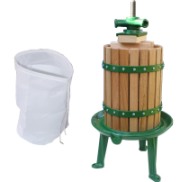 Straining Bags Straining Bags Presses & Crushers |
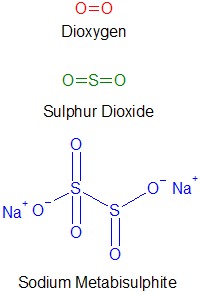 | Now you have your juice you must protect it, firstly and hopefully obliviously from fruit/any other flies that will ruin juice/wine very quickly. The second is from Oxygen and spoilage organisms. Oxygen or O 2 is a gas that makes up about 20% of the air around us, It does many things including letting us breath, metals rust, and important to us, oxidises wine and fruit juice leading to the formation of acetaldehydes and acetic acid (vinigar). This must be avoided at all cost. Sulpher dioxide wich prevents the O 2 from affecting the wine, it also kill wild yeasts and other bactiria that may be in the juice. The correct dose is about 120mg per litre, or 1g of sodium metabisulphite per gallon. This can be weighed out using an accurate balance or you can use 2 crushed campden tablets. (1 campden tablet contains 0.5g of sodium metabisulphite) |
| Now we need to add a good wine yeast to the must. There is a great range of yeast availble, the most easly obtained and kept are dried yeasts, Gervin and lalvin are both good makes and an apropreate yeast can normaly be found in there ranges. | 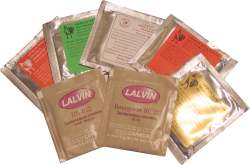 Selection" width="250" height="165" /> Selection" width="250" height="165" /> Gervin yeasts Lalvin yeasts |
| Once the wine has been racked off the sediment into a clean container it should be stabilised. Finnings can then be added to speed clearing. Once the wine is clear it can be bottled. Much more information on making wine from grapes can be found in Growing Vines to Make Wines by Nick Poulter, which is an excellent guide to both growing grapes and making wine from them. |

